Introduction

The Great Trail Adventure is a relatively new name in the business. It was only a few months ago that they held their inaugural edition – a training school - in the outskirts of Pune. All the same, it saw good participation and there has been much conversation in the industry about it since then. Even better were the photographs that brilliantly captured the trainees performing hurdle crossings, humps and jumps and skirting gravel pits. As a passionate biker who loves nothing better than spending his weekends traversing off-road trails, I was eagerly hoping that I would get to attend the next edition. And to my surprise and delight, I got an invitation from BigRock MotoPark to attend the Great Trail Adventure Chikmagalur edition. Naturally, my reply was an emphatic ´yes!´
It was only later that I remembered that in my excitement I had forgotten to get clearance for it from my boss. Despite the really short notice, Vikrant, who is an ardent biker himself, understood that I was hopelessly in the grips of trail fever and was kind enough to give his assent. So with our bags and camera gear packed, Kaustubh, our in-house shutterbug, and I left for Chikmagalur, a town situated close to my native home in Mangaluru. It was also a town I had never visited it in all the 30 years of my existence, until that day.

The GTA Chikmagalur edition was conducted by BigRock Dirtpark and the man who headed it was CS Santosh, the first Indian motorcycle rider to take part in Dakar Rally. Along with him was Jordi Grau, CS Santosh’s coach and ex-rallyist and Nilesh Dhumal. The place of action was Wildberry Adventure, nestled between towering hills and lush green forest. Kaustubh and I reached the ground zero in time, only to realise that there was a problem at hand. A big one. A closer look revealed that the training ground didn’t have a single patch of dry area, thanks to the early arrival of monsoon. Besides, the place had experienced heavy downpour the previous night. While we did appreciate the overall setting of the place, the slush conditions foreboded a dangerous and difficult training session. So the organisers decided to modify the plan slightly. Avoid the slushy training grounds and head to the forest trails, which was part of the plan only if we managed to improve our off-road skills on Day 1. It was really a blessing in disguise because we got the opportunity to spend more time in Chikmagalur forest.

Day 1 officially began with CS Santosh demonstrating the basics of trail riding. So aspects like right ergonomics, stand-up riding posture and benefits of low tyre air pressure were explained. Unfortunately, most of the riders were running road tyres on their Tigers, Multistradas and the Versys. So getting the right tyre pressure was really important. Luckily, I had brought along the Royal Enfield Himalayan which has a decent pair of CEAT dual-purpose tyres. A total of five drills were performed during this two-day riding course. Let me break it down for you.
Drills
Drill 1: Stand-up riding

How does it help?
There are various reasons why one needs to stand up and ride. It helps in visibility, controlling the motorcycle and also the body acts like a suspension in off-road areas. Separating body weight from the motorcycle is important as it will lead to better control over the bike. In fact, body movements and weight transfer affect a motorcycle’s handling more while standing than sitting.
Cheat to do it right!
It’s easy! Plant the balls of your feet squarely on the pegs, grab the fuel tank with your knees and hold the handlebar a bit more angularly than you would under normal riding conditions. Make sure your legs are not completely straight while you’re standing. It needs to bend a bit so it acts as suspension.
Drill 2: Riding through ruts

How does it help?
India is a country filled with off-road terrains which are unpredictable most of the time. So it’s really important to know your trail and in order to do that, you need to ride slow.
Cheat to do it right!
Throttle, brake and clutch - all three need to be in use at all the time. The main aspect here is to keep the front brake engaged a bit, so that the weight transfers to the front wheel. As a result of this, the front tyre will track easily and follow the right line and that will help the rider pass through any ruts with ease. Besides, during monsoon, we often choose to ride on slush/mud over flowing water and that’s a terrible thing to do. Flowing water tends to carry away all the lose mud and slush. So most of the time, there will be only firm ground beneath the water and that will give you the maximum traction.
Drill 3: Slaloms

How does it help?
It helps you with balance. There comes a time where you get an itch to explore the unexplored and that means getting through tight trails and obstacles. Slaloms helps you find the right balance and patience while riding these trails.
Cheat to do it right!

It’s all about right body positioning. The idea is to move the upper body to the opposite side of the turn. So if you want to go right, slide your upper body to the left. But this needs to be done by holding the motorcycle with the knees and they need to be parallel to each other and should point at the same direction as the turn. The idea is to tilt the motorcycle and not turn it using the handlebar.
Drill 4: Run-up slaloms

How does it help?
Run-up slaloms is all about getting out of difficult situations with ease and minimum effort. There are times when a rider is stuck between some obstacles or two large trees and to make things worse, the entire area could be a slush pit. So the only way to get out of that situation is to get off the bike, start it and rev it up before hopping up on the bike again.
Cheat to do it right!

It’s all about judgement and balance. Here, you need a bit of coordination between the legs. The left foot needs to be on the peg before you start moving the motorcycle. This will be an easy task for someone wearing adventure or dirt boots and using aluminium pegs instead of rubber ones. That way, there’s more grip which will directly improve the balancing skills. So once this is dealt with, use the throttle gently and then confidently swing the right leg over the saddle.
Drill 5: Uphill slush riding

How does it help?
This drill makes sure you reach the top of the trail safe and sound. Riding uphill in wet conditions is very difficult if not impossible.
Cheat to do it right!

It’s actually pretty simple. The idea here is to shift the body weight to the rear so that the rear tyre finds the right traction. Then twist the throttle gently and feel the tyre gripping the wet surface.
Conclusion

Although it was only a two day course, I now feel more confident about taming wet and slushy conditions. Whether it be on a big ADV or something accessible like the Himalayan. While I managed to return with a great deal of knowledge on off-road riding, my biggest takeaway from this weekend is usage of the right off-road tyres. Without these, any off-road adventure can become a tricky one.
Gallery
1/30
Great Trail Adventure
Double Tap to Zoom











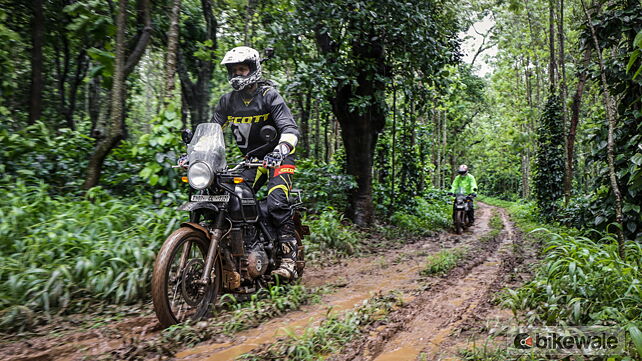












![Royal Enfield Himalayan [2015-2023] Image Royal Enfield Himalayan [2015-2023] Image](https://imgd.aeplcdn.com/272x153/n/cw/ec/49739/himalayan-right-front-three-quarter-2.png?isig=0&q=80)
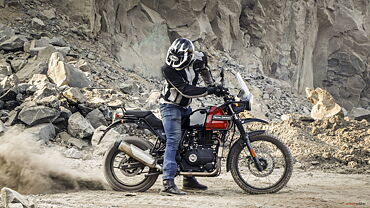
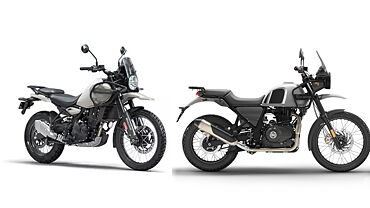



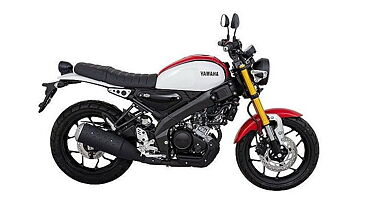

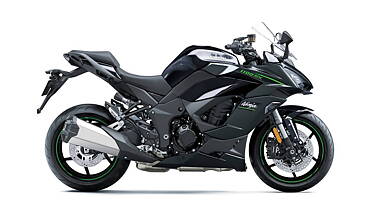
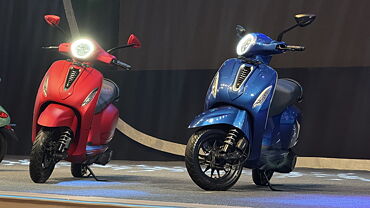
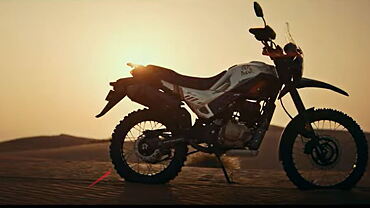





![Royal Enfield Himalayan [2015-2023] Right Side Royal Enfield Himalayan [2015-2023] Right Side](https://imgd.aeplcdn.com/199x112/n/cw/ec/49739/royalenfield-himalayan-right-side12.jpeg?q=80)
![Royal Enfield Himalayan [2015-2023] Right Side Royal Enfield Himalayan [2015-2023] Right Side](https://imgd.aeplcdn.com/199x112/n/cw/ec/49739/royalenfield-himalayan-right-side13.jpeg?q=80)
![Royal Enfield Himalayan [2015-2023] Right Side Royal Enfield Himalayan [2015-2023] Right Side](https://imgd.aeplcdn.com/199x112/n/cw/ec/49739/royalenfield-himalayan-right-side14.jpeg?q=80)
![Royal Enfield Himalayan [2015-2023] Front Three-Quarter Royal Enfield Himalayan [2015-2023] Front Three-Quarter](https://imgd.aeplcdn.com/199x112/n/cw/ec/49739/royalenfield-himalayan-front-three-quarter0.jpeg?q=80)
![Royal Enfield Himalayan [2015-2023] Side Royal Enfield Himalayan [2015-2023] Side](https://imgd.aeplcdn.com/468x263/n/cw/ec/49739/royalenfield-himalayan-side16.jpeg?q=80)






